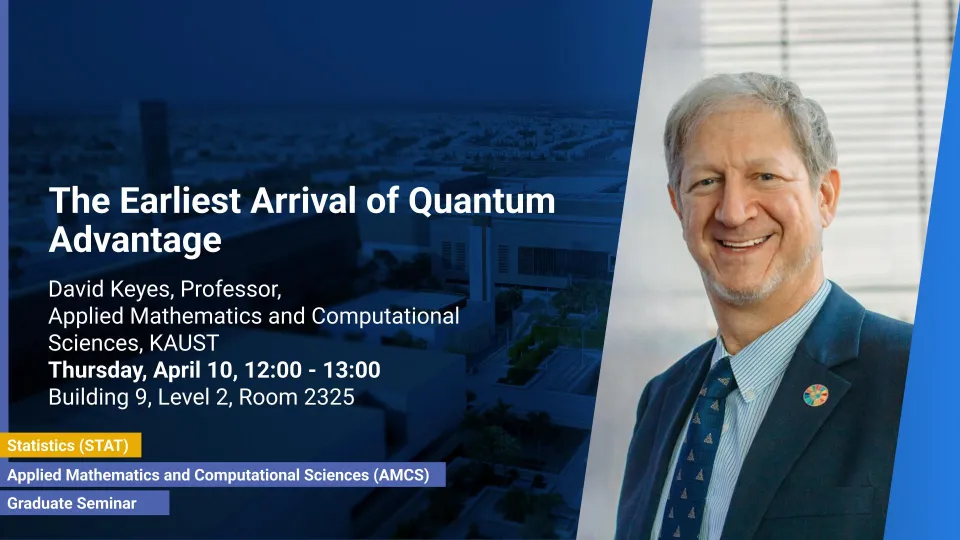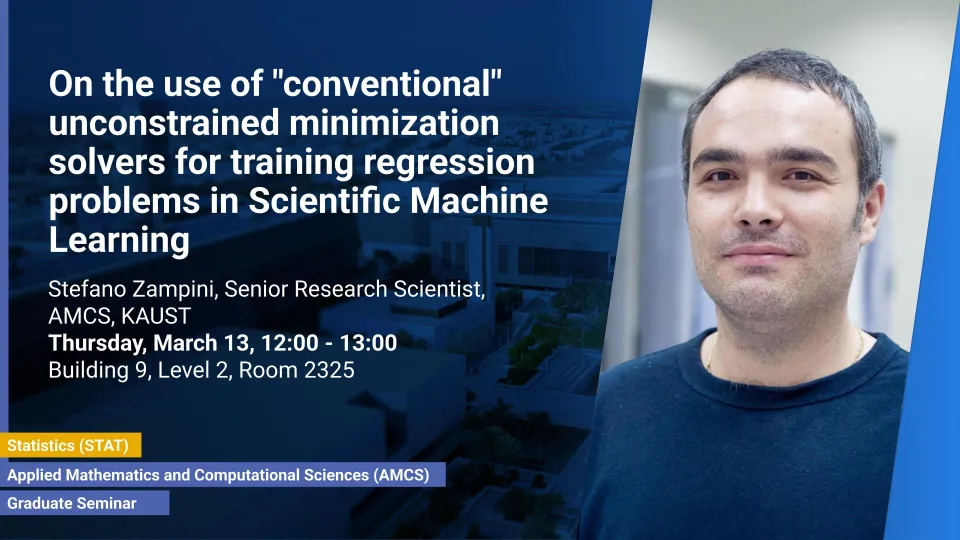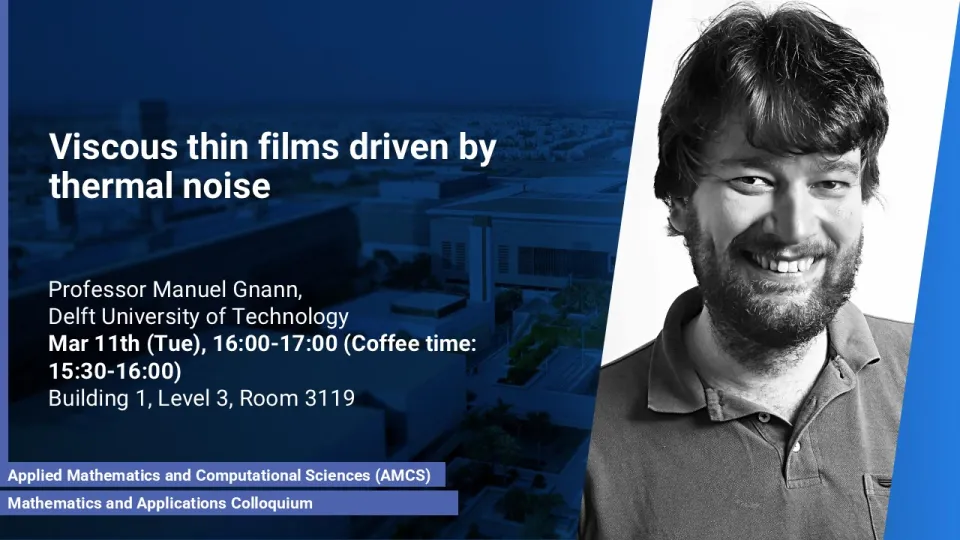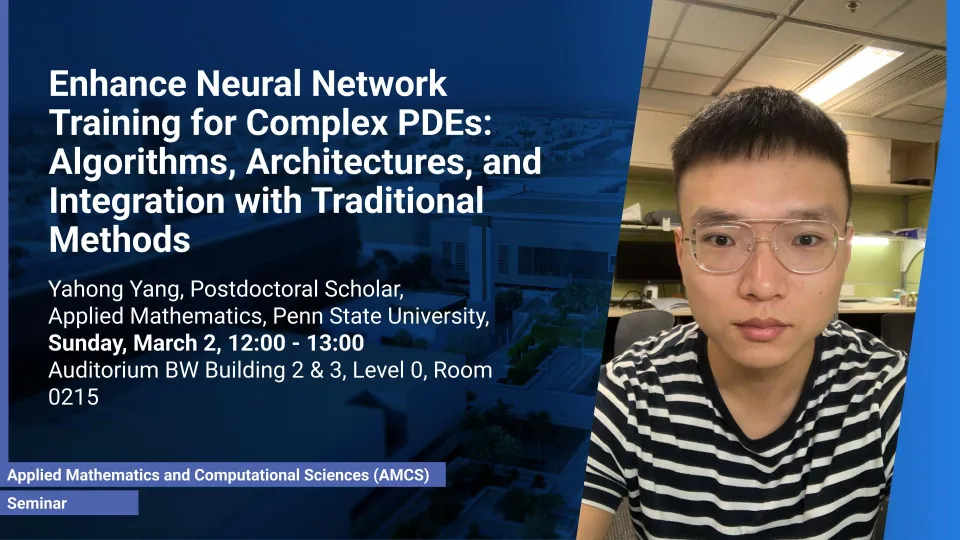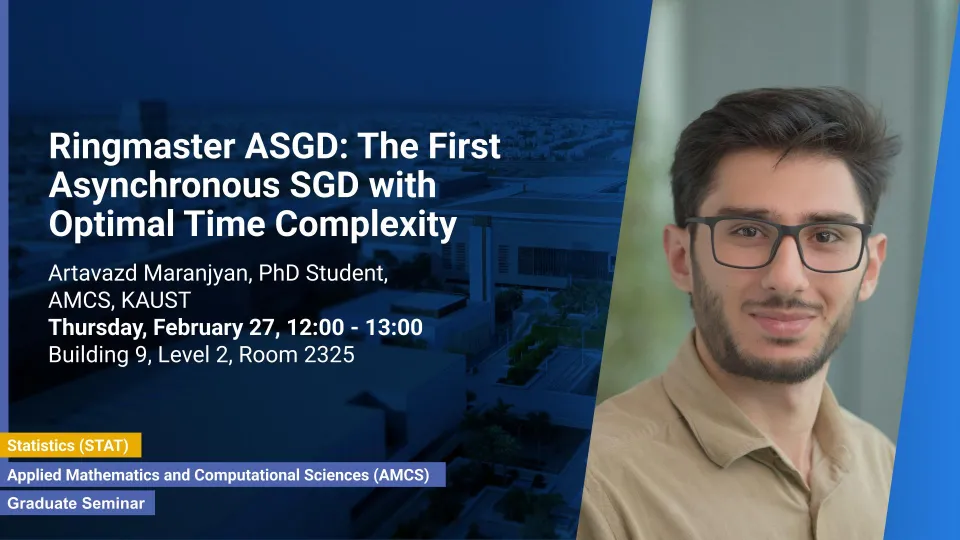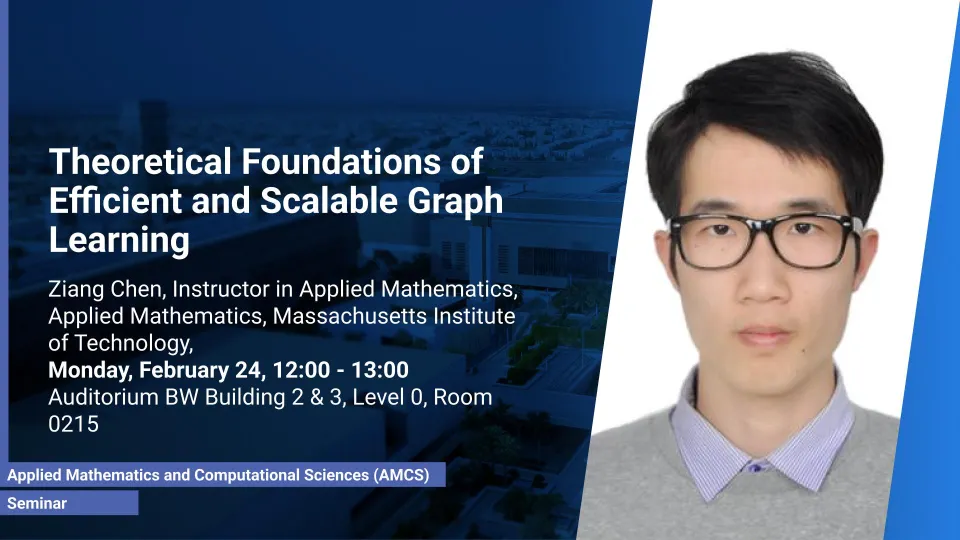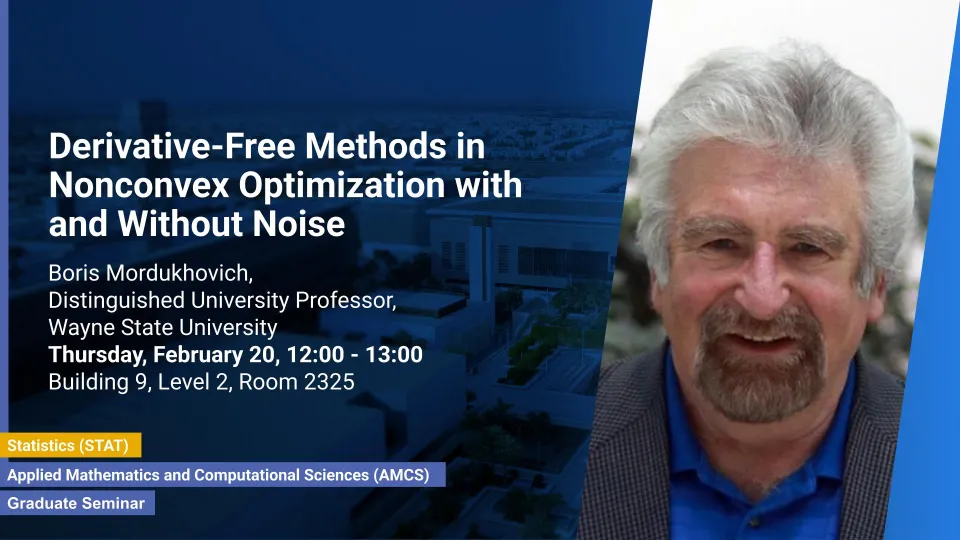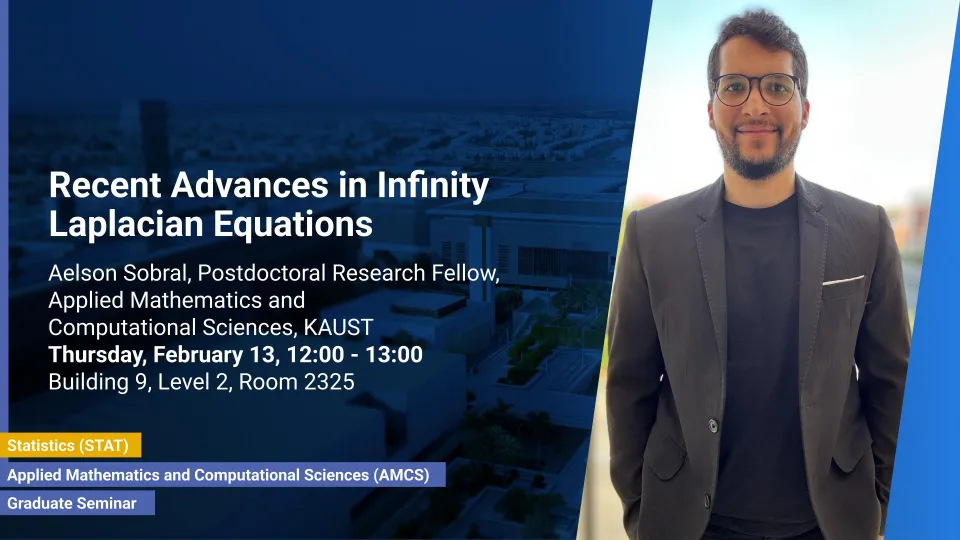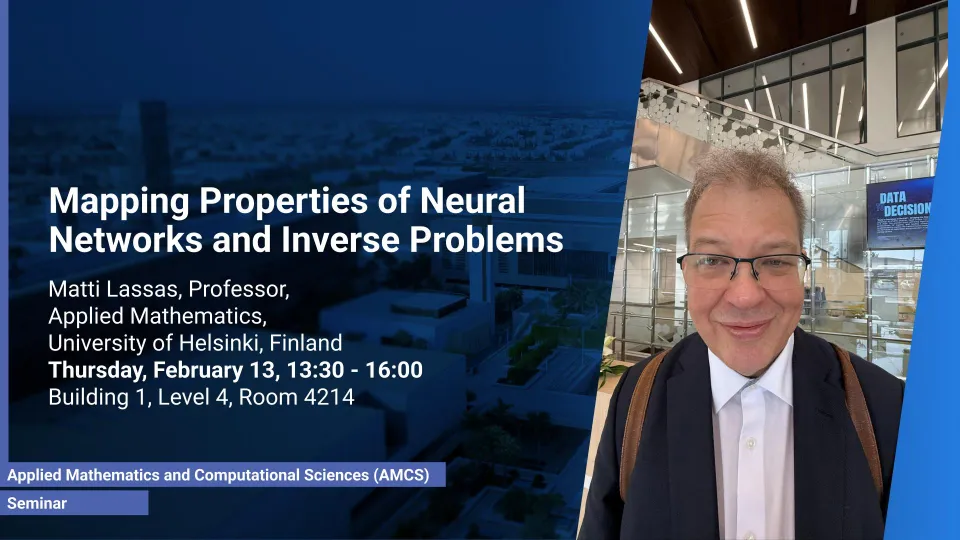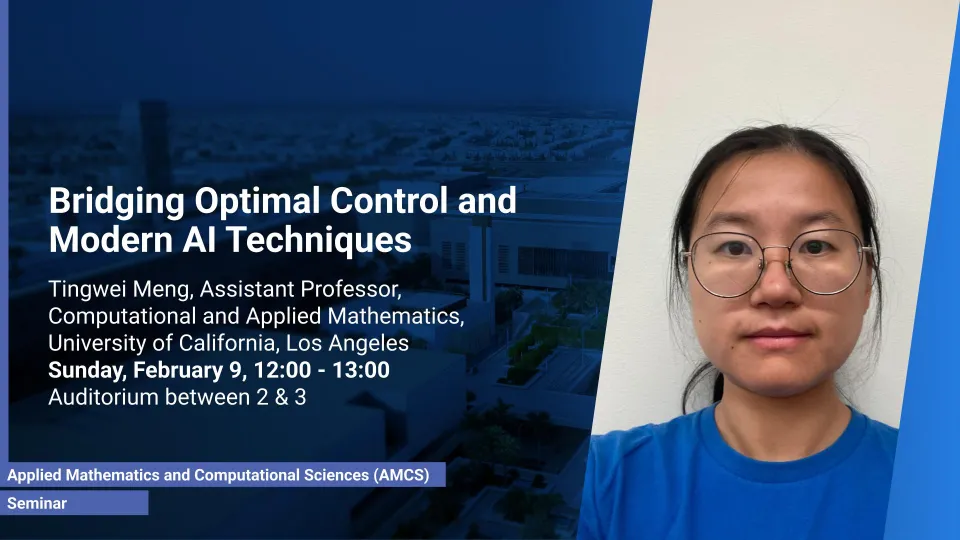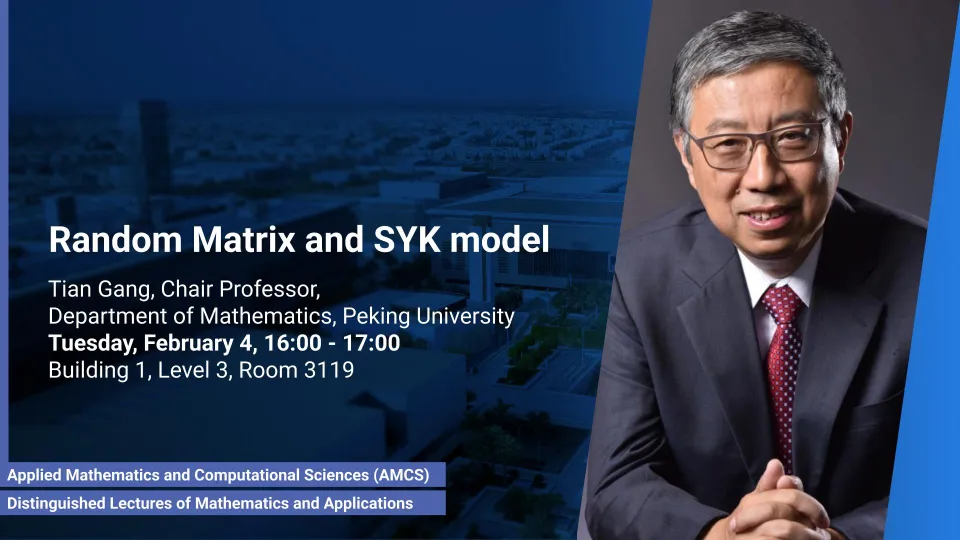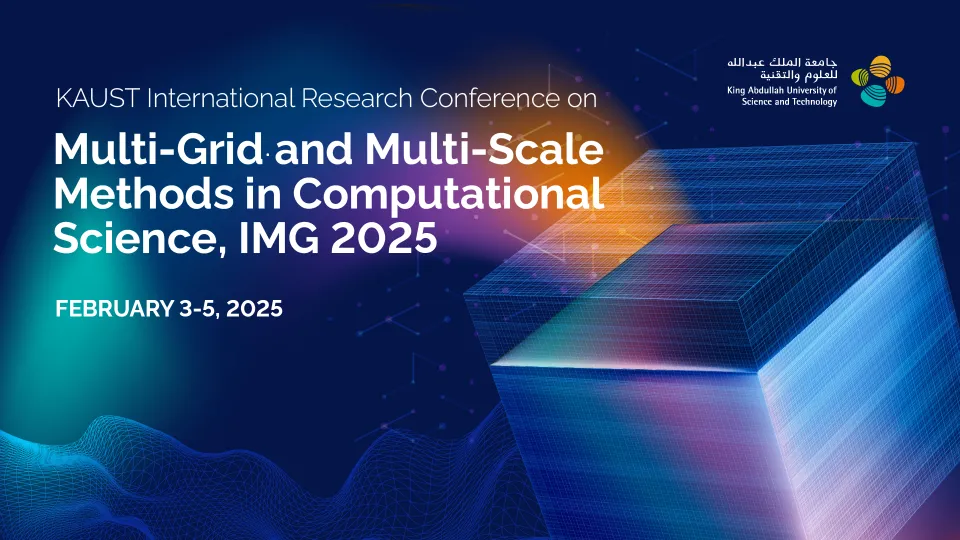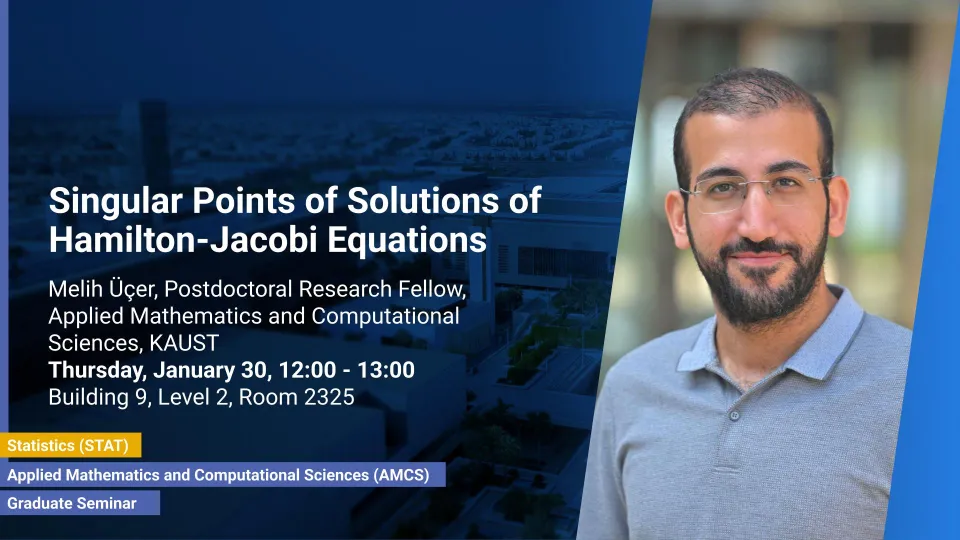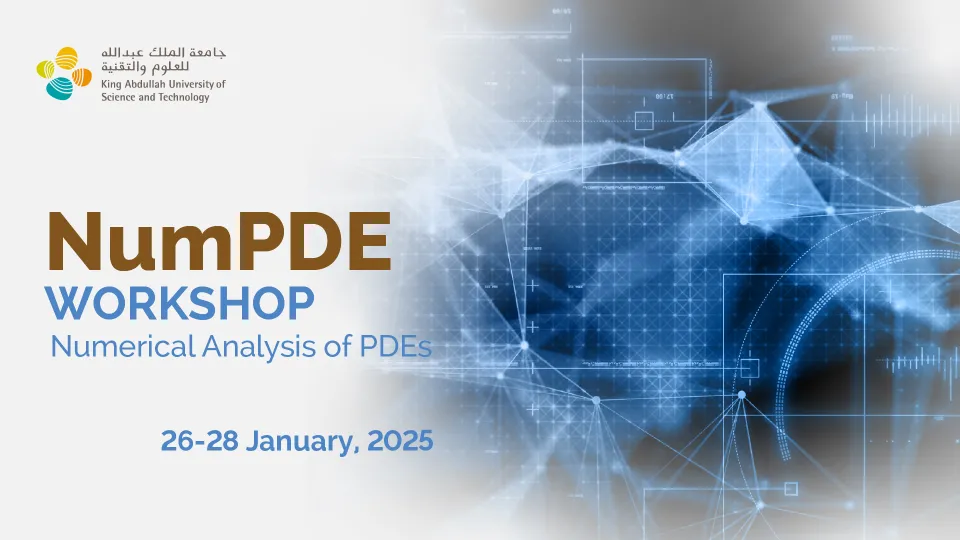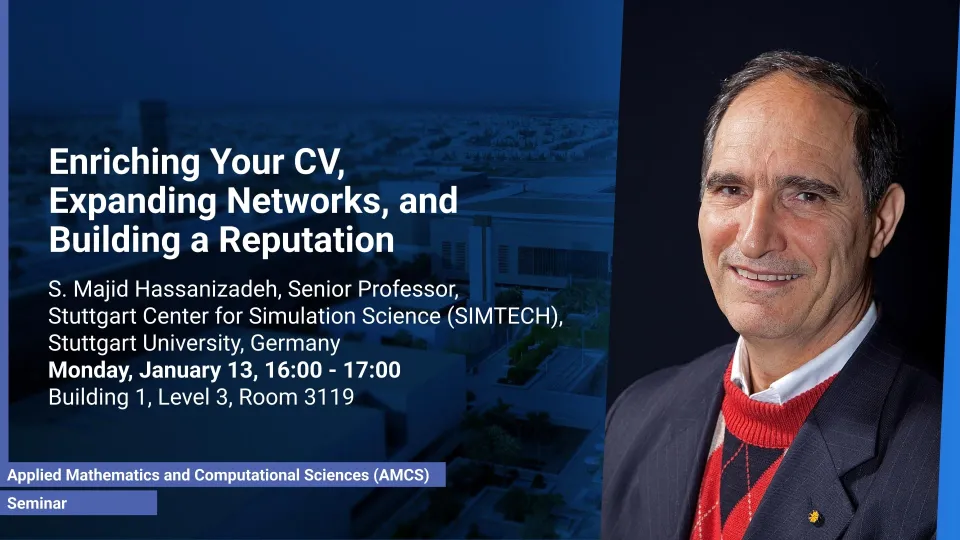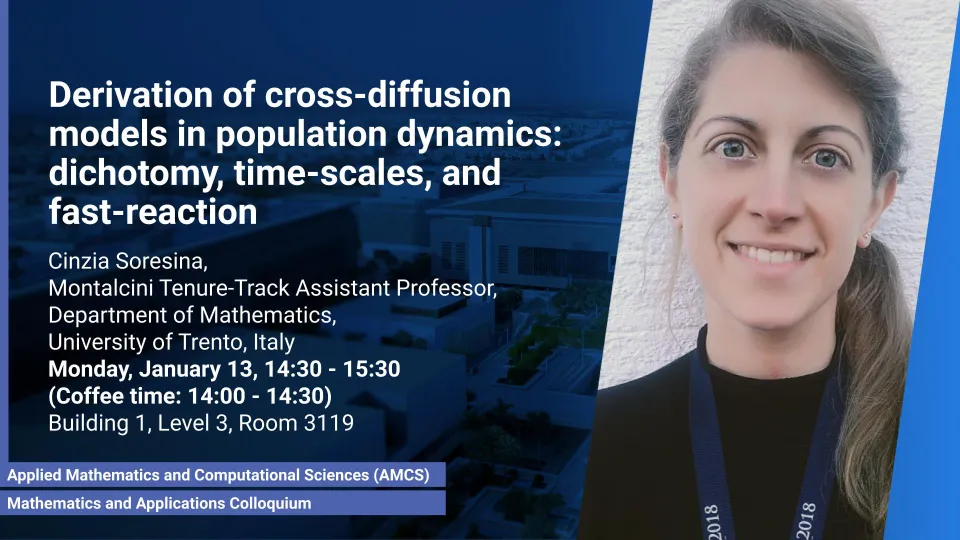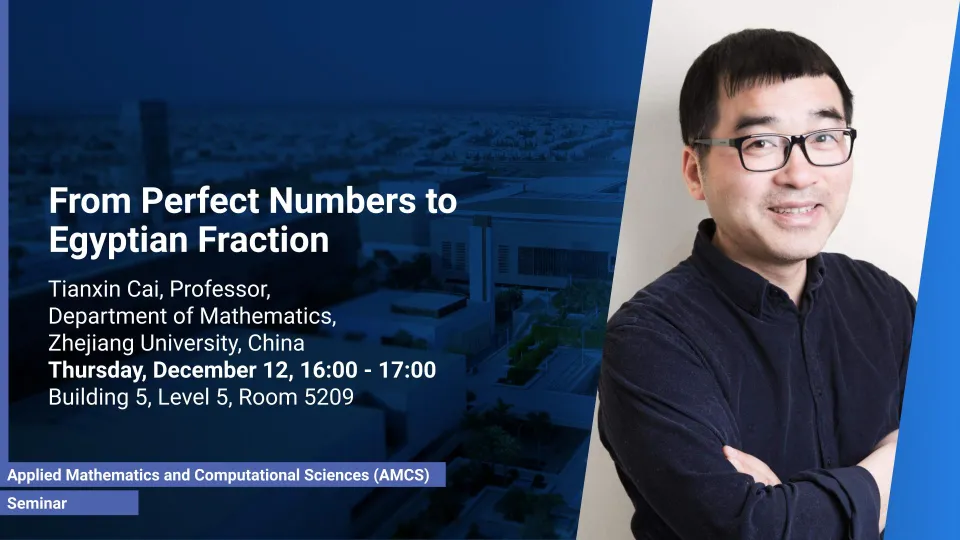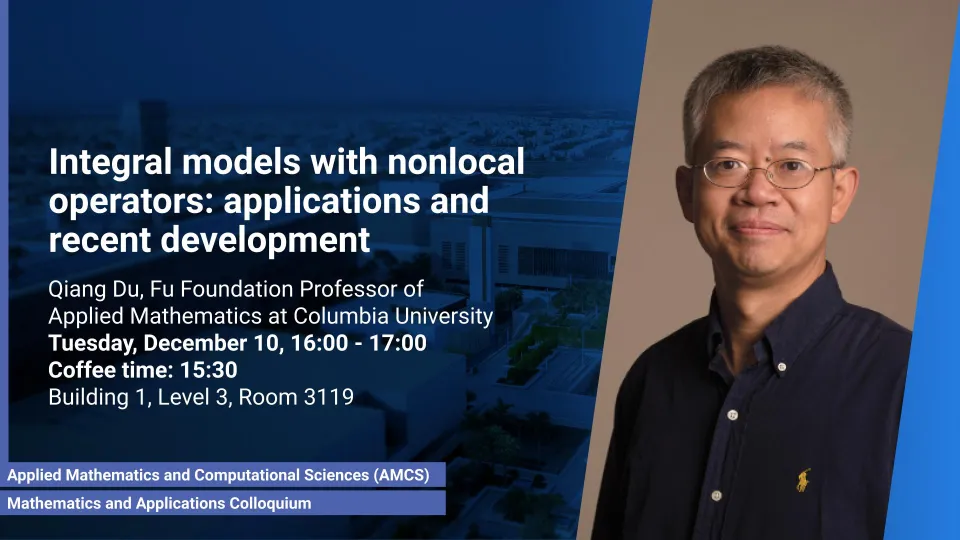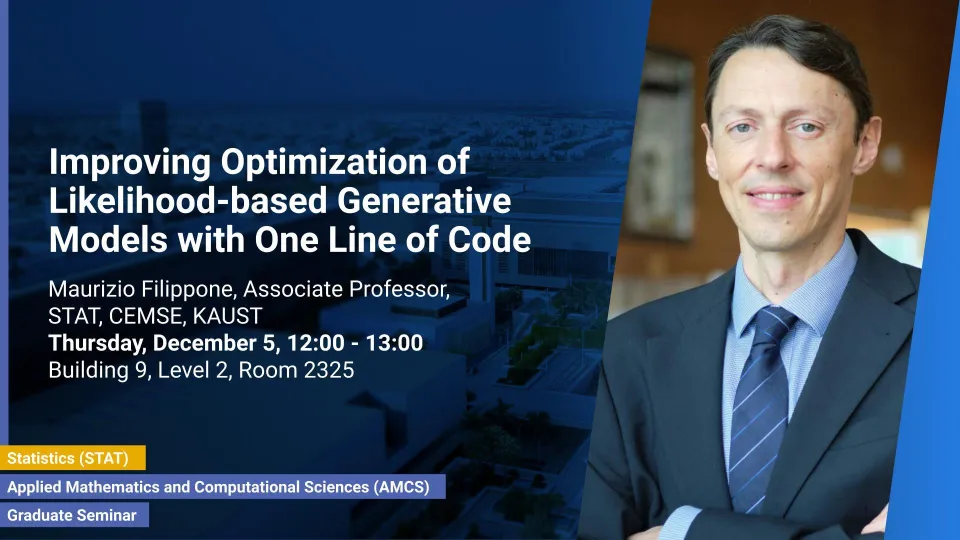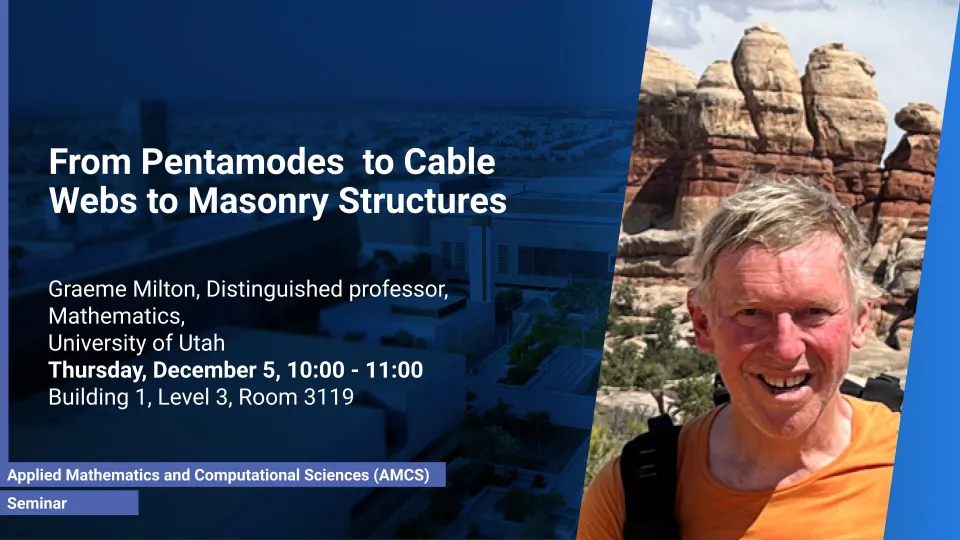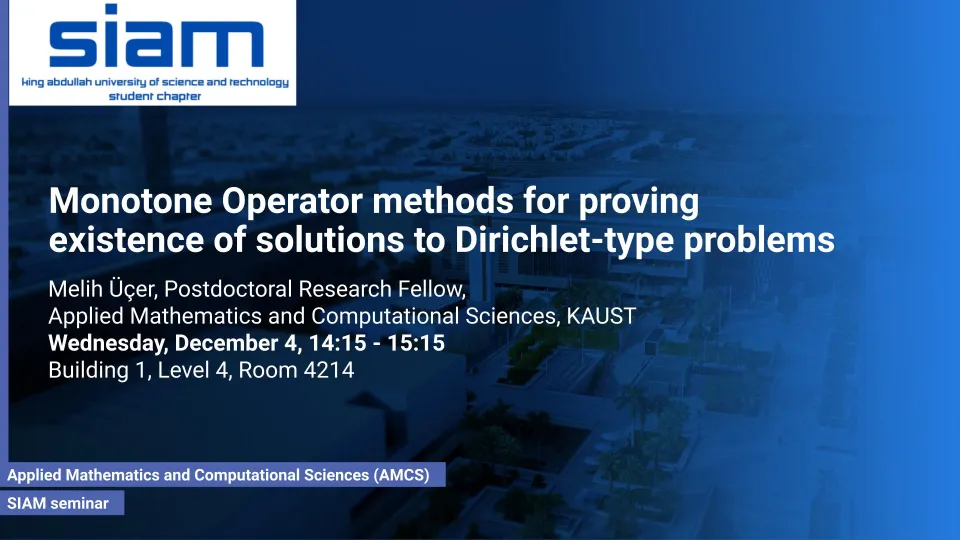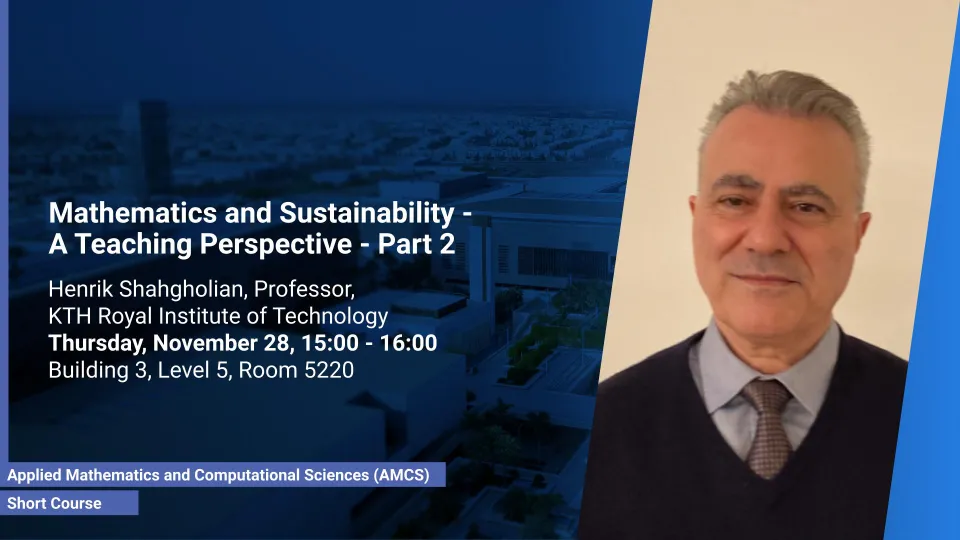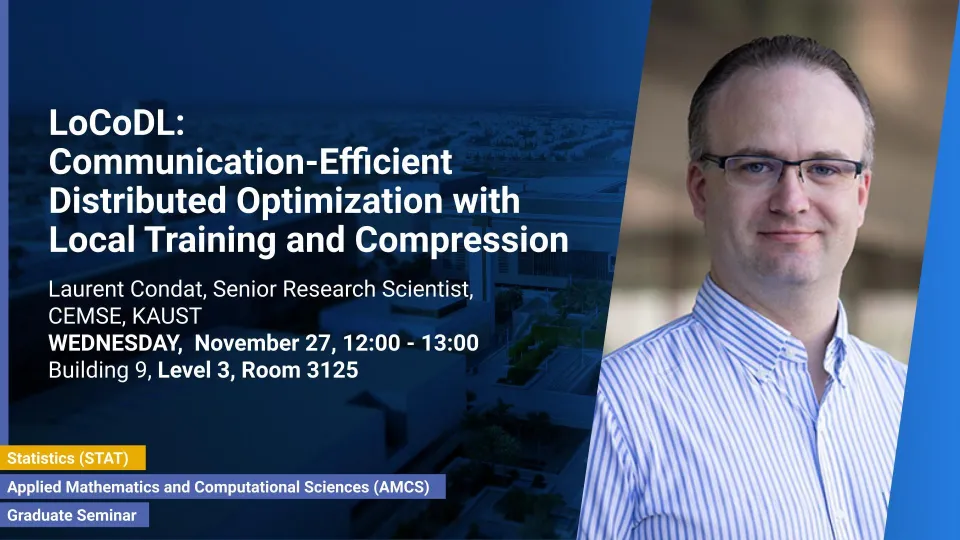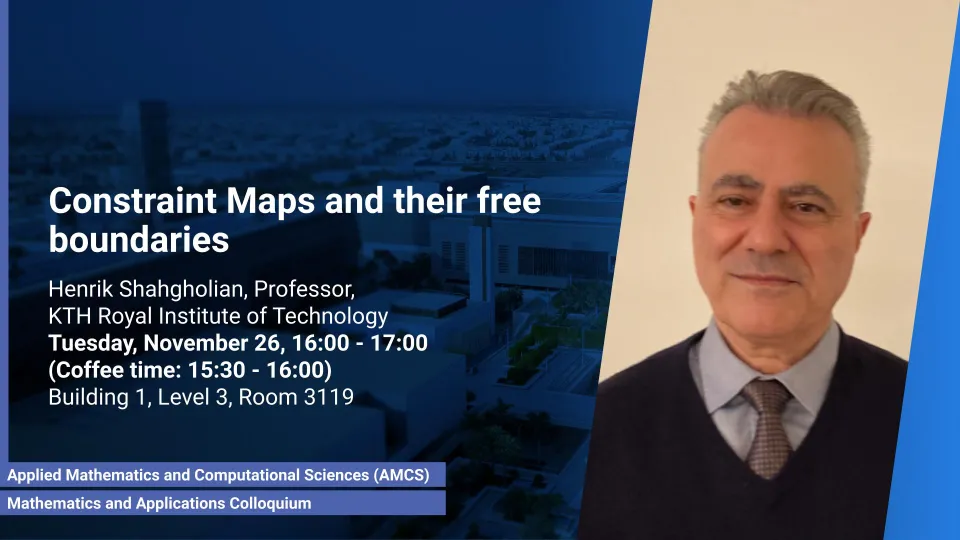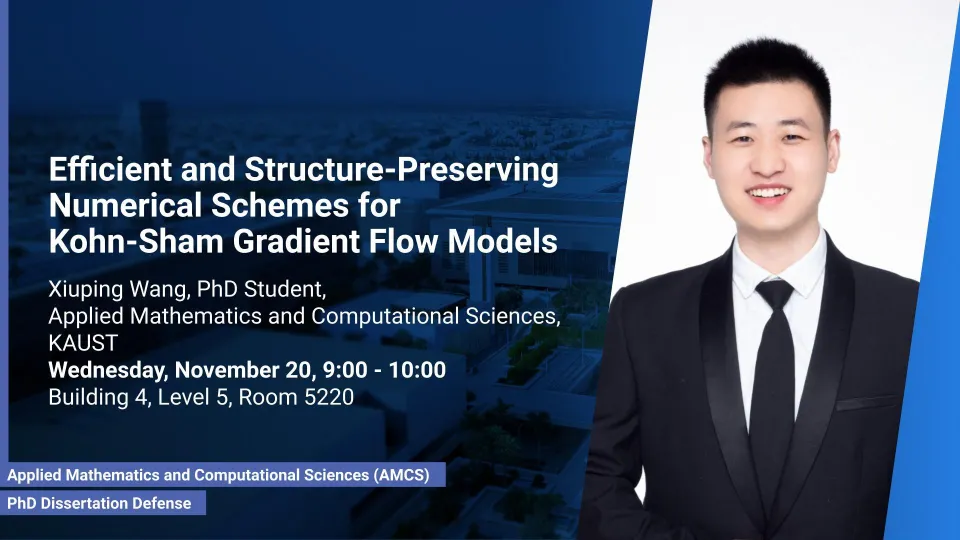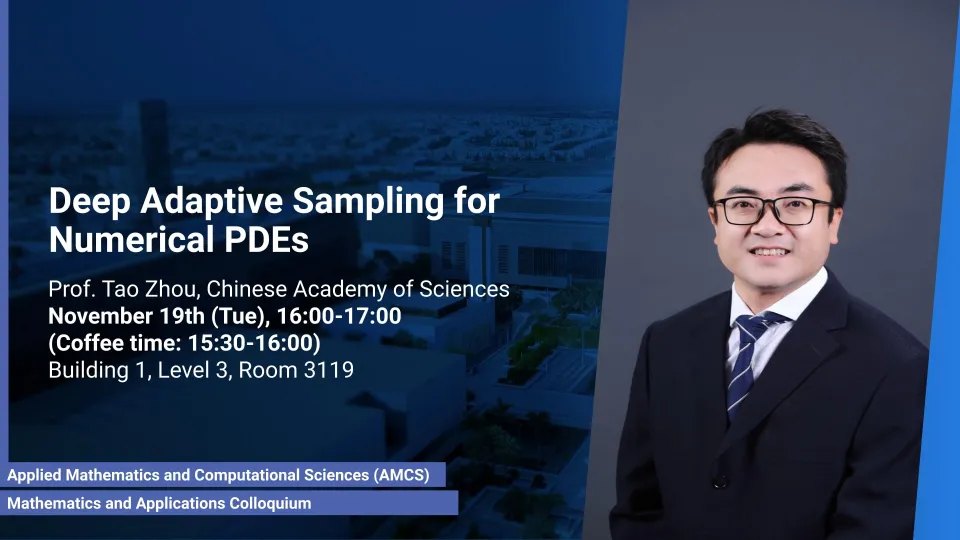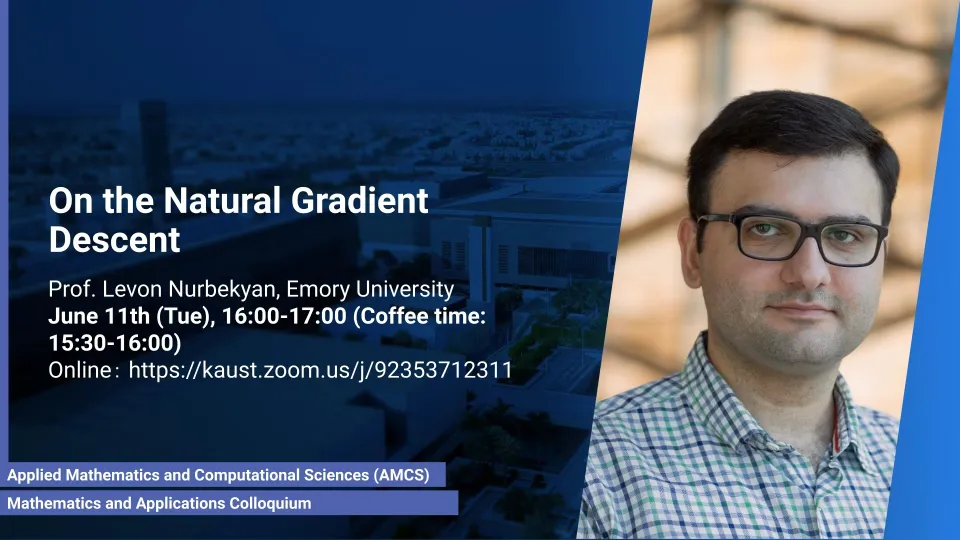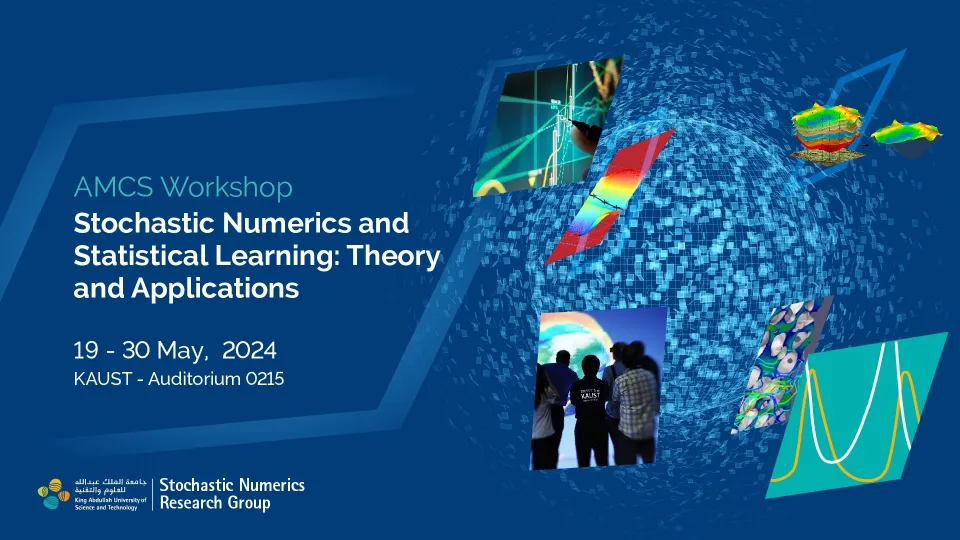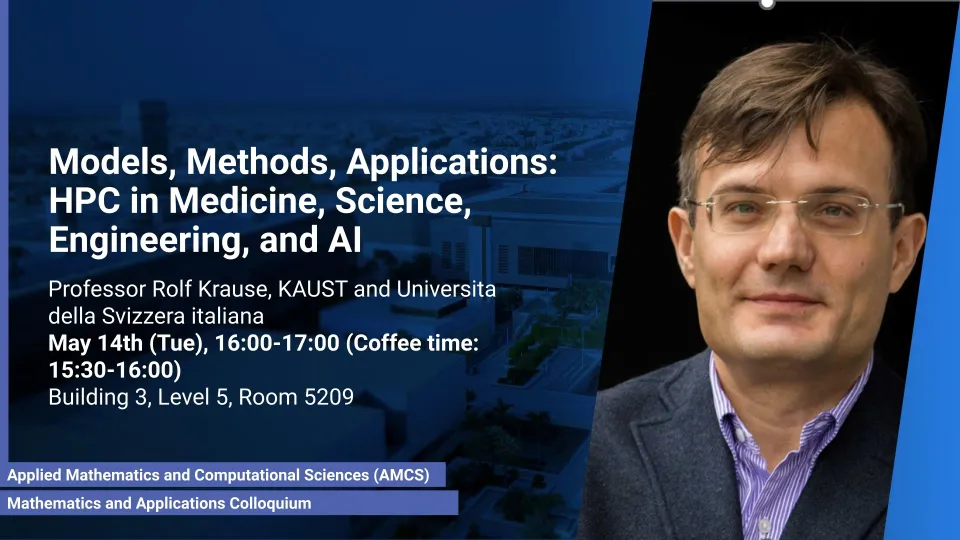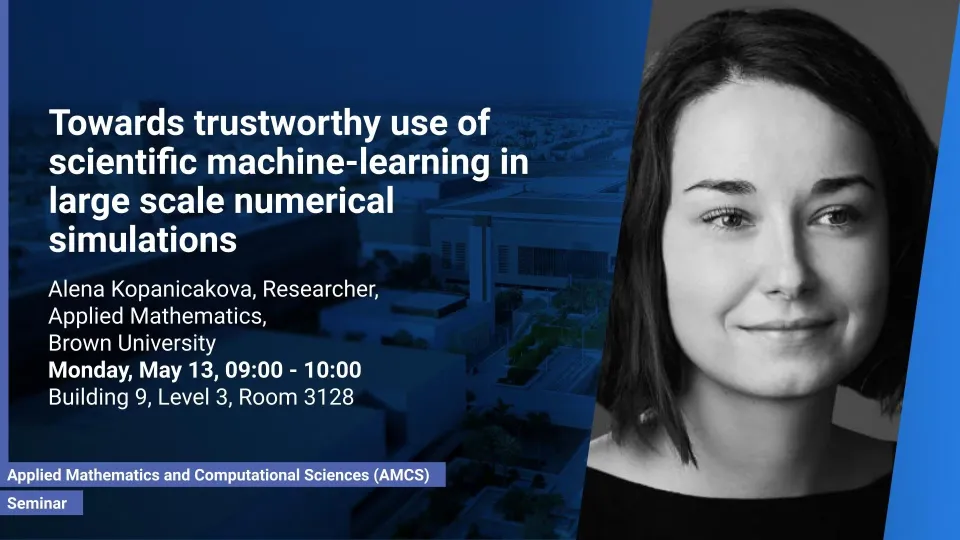Events
May 18 - May 24, 2025
Apr 6 - Apr 12, 2025
Mar 23 - Mar 29, 2025
Mar 16 - Mar 22, 2025
Mar 9 - Mar 15, 2025
Mar 2 - Mar 8, 2025
Feb 23 - Mar 1, 2025
Theoretical Foundations of Efficient and Scalable Graph Learning
-
Auditorium between Building 2 - 3, L0 R0215
Feb 16 - Feb 22, 2025
Feb 9 - Feb 15, 2025
Feb 2 - Feb 8, 2025
Jan 26 - Feb 1, 2025
NumPDE Workshop: Numerical Analysis of PDEs
-
Sunday 26/01 (morning, 8.45-13.30) - Auditorium between Building 2 and Building 3; Sunday 26/01 (afternoon, from 13.45) - Building 9, Room 2322 (Lecture Hall); Monday 27/01 and Tuesday 28/01 - Auditorium between Building 4 and Building 5
Jan 19 - Jan 25, 2025
Jan 12 - Jan 18, 2025
Dec 22 - Dec 28, 2024
Dec 8 - Dec 14, 2024
Dec 1 - Dec 7, 2024
Nov 24 - Nov 30, 2024
Nov 17 - Nov 23, 2024
Jun 9 - Jun 15, 2024
May 26 - Jun 1, 2024
May 19 - May 25, 2024
Stochastic Numerics and Statistical Learning: Theory and Applications Workshop 2024
Stochastic Numerics PI Professor Raul Tempone (Chair) and Computational Probability PI Professor Ajay Jasra (Co-Chair)
-
B2 B3 A0215

